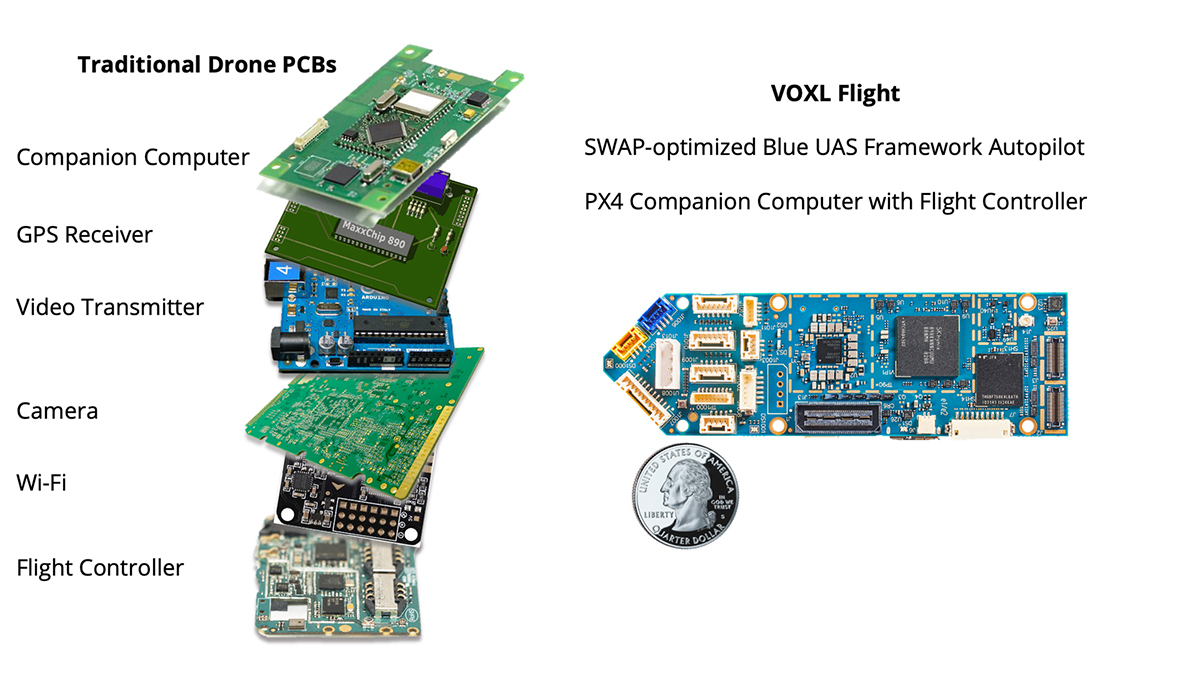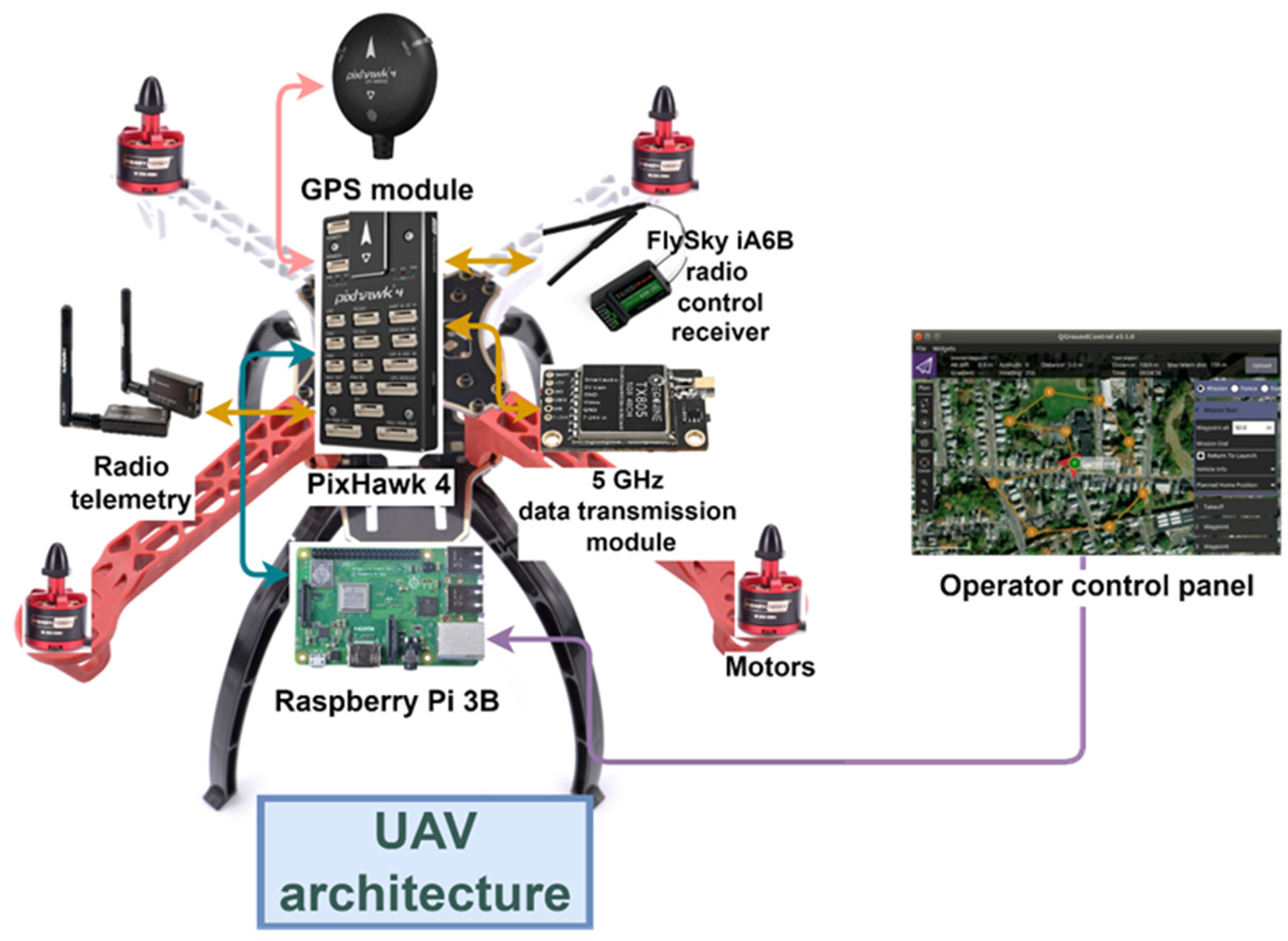Why Select SparkNavi Drone Flight Controller and GNSS/INS Made in Taiwan for Advanced Navigating
Exploring the Duty of Drone Flight Controllers in Enhancing Flight Stability and Navigating Performance
The improvement of drone modern technology has dramatically boosted the relevance of flight controllers, which serve as the brain of these aerial automobiles. By integrating real-time information from a range of sensing units, trip controllers enhance flight security and navigation effectiveness, making sure that drones can run efficiently also in complicated atmospheres.

Understanding Flight Controllers
Trip controllers are essential parts in the performance of drones, serving as the minds that maintain and manage flight operations. These advanced gadgets procedure data from numerous sensing units, consisting of accelerometers, gyroscopes, and GPS, to guarantee that the drone maintains its desired flight path. The trip controller translates this data and executes commands based on pre-defined formulas, allowing the drone to respond to ecological changes, such as wind or barriers.
The key function of a trip controller is to maintain stability during trip. It achieves this by making real-time changes to the drone's electric motors and control surface areas, ensuring balance and control. In addition, contemporary trip controllers include advanced attributes such as waypoint navigation, enabling automated trip paths and boosted operational performance.
Understanding the architecture of trip controllers is critical for both enthusiasts and professionals. They commonly are composed of a microcontroller, firmware, and various interfaces for sensing unit input and interaction. As technology developments, flight controllers have actually come to be much more capable and compact, incorporating man-made intelligence to adapt and improve decision-making processes to intricate flight circumstances. This evolution indicates a crucial advancement in the drone market, leading the way for much more advanced applications and more secure procedures.
Trick Components of Flight Stability
Achieving ideal trip stability in drones depends on a number of essential elements that function in performance to guarantee smooth and controlled operations. Central to this security is the flight controller itself, which refines information from different sensing units to keep the desired trip perspective. This includes accelerometers and gyroscopes that determine activity and orientation, allowing for real-time modifications to the drone's placement.
One more critical element is the digital rate controllers (ESCs), which control the power delivered to the electric motors. By carefully tuning motor rates in action to trip controller commands, ESCs help preserve balance and neutralize disruptions caused by wind or sudden movements.
Additionally, the style of the drone's framework plays an essential role in trip security. A well-structured framework reduces vibrations and enhances the total wind resistant profile, contributing to smoother trip characteristics. Lastly, the combination of advanced algorithms within the trip controller aids in predictive changes, making certain a versatile and receptive trip experience.
With each other, these elements form a natural system that boosts a drone's stability, enabling accurate maneuvering and boosted efficiency in different flight problems.
Navigating Effectiveness Techniques
Performance in navigating is crucial for maximizing drone operations, particularly in intricate settings. Reliable navigation strategies enhance the ability of drones to pass through difficult surfaces and prevent barriers, consequently enhancing functional performance and security.
One noticeable technique is the implementation of sophisticated GPS and inertial dimension units (IMUs) that supply exact place monitoring and positioning information. These innovations permit drones to compute ideal trip paths in real-time, considering various aspects such as wind problems and potential challenges.
An additional technique involves the use of formulas for path planning and optimization. Formulas such as A * and Dijkstra's algorithm can be released to determine the most reliable course while reducing power intake and flight time. Incorporating machine discovering designs can allow drones to adaptively find out from their settings, improving navigation capabilities via experience.

Influence On Autonomous Drones
The integration site here of innovative navigating methods has actually greatly changed the abilities of self-governing drones, enabling them to run with better autonomy and accuracy. SparkNavi drone flight controller and GNSS/INS made in taiwan. These improvements are mostly associated to sophisticated trip controllers that make use of real-time data processing and sensor blend, permitting drones to browse complicated environments seamlessly
The influence on self-governing drones expands beyond plain navigating; it includes improved challenge avoidance, improved stability during vibrant conditions, and enhanced goal integrity. By leveraging algorithms that include device learning and expert system, drones can adapt to transforming scenarios, making notified choices that enhance their trip paths while minimizing dangers.
Furthermore, the application of durable flight controllers has actually helped with the execution of complicated jobs, such as airborne evaluations, delivery services, and farming monitoring, with marginal human intervention. This capacity not just enhances procedures yet likewise reduces human error, thereby boosting general safety.
As a result, the functional scope of independent drones has broadened dramatically, making them vital tools in various sectors. Their capability to perform effectively in varied scenarios underscores the critical duty that advanced trip try here controllers play fit the future of unmanned airborne systems.
Future Trends in Flight Control
Regularly, improvements in trip control innovation are positioned to redefine the landscape of drone operations in the coming years. Emerging patterns suggest a significant shift in the direction of boosted artificial intelligence (AI) integration, allowing flight controllers to process real-time information much more effectively. This development will certainly assist in better decision-making capacities, enabling drones to adapt to dynamic environmental conditions autonomously.
Moreover, the implementation of artificial intelligence algorithms is anticipated to boost anticipating upkeep, consequently lessening downtime and expanding the lifecycle of drone elements. This proactive approach to maintenance will be crucial as drone applications broaden across different markets, from farming to logistics.

.png)
Finally, anonymous innovations in secure interaction protocols will address safety and governing problems, making sure that drones can operate perfectly in congested airspaces (SparkNavi drone flight controller and GNSS/INS made in taiwan). Collectively, these fads aim towards a future where trip control systems are not just smarter and a lot more efficient but likewise qualified of operating securely in a progressively integrated airspace
Verdict
In conclusion, drone flight controllers are important to enhancing flight stability and navigating effectiveness via the sophisticated processing of sensor information. By keeping optimum trip perspectives and utilizing innovative formulas for course optimization and barrier avoidance, these controllers considerably contribute to the autonomy and functional safety and security of drones. As modern technology remains to develop, additionally innovations in trip control systems are prepared for, assuring improved performance and expanded capabilities in the realm of unmanned aerial vehicles.
By integrating real-time data from a variety of sensing units, trip controllers boost flight stability and navigating performance, making certain that drones can operate smoothly even in complex environments.Trip controllers are integral parts in the performance of drones, offering as the minds that stabilize and handle flight operations. Additionally, modern flight controllers integrate innovative attributes such as waypoint navigating, permitting for automated trip paths and enhanced functional effectiveness.
Central to this stability is the trip controller itself, which processes data from different sensors to preserve the desired trip mindset.In conclusion, drone trip controllers are essential to boosting trip security and navigating efficiency through the innovative handling of sensing unit information.